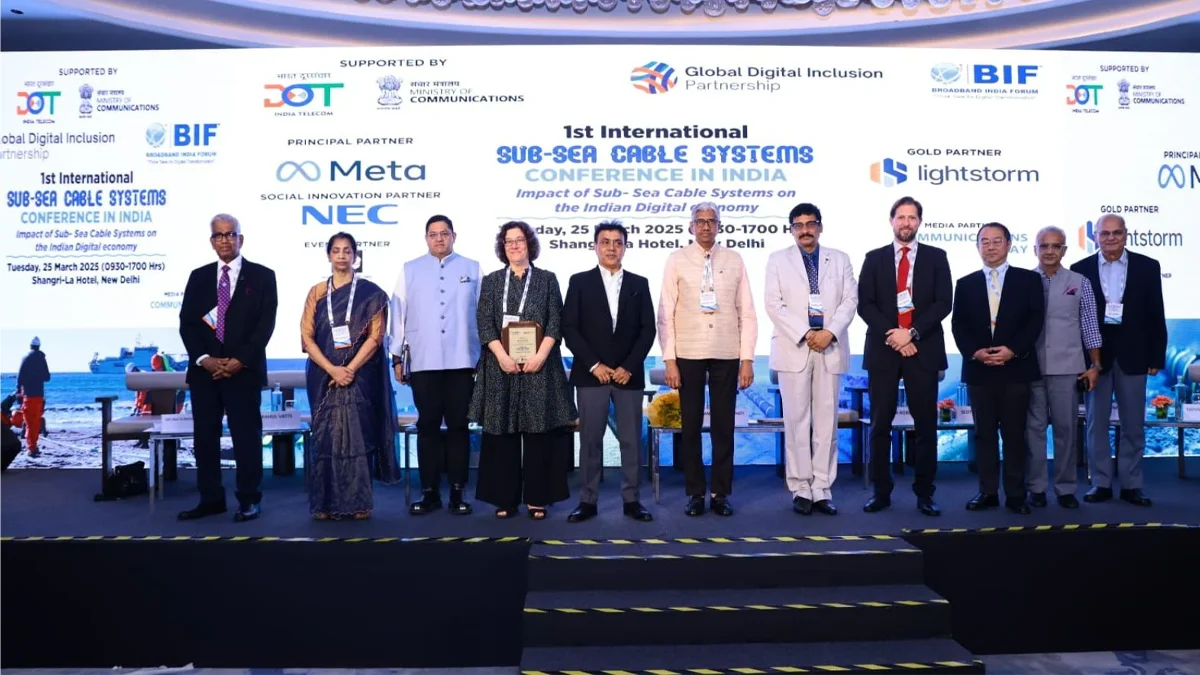Necessary Always Active
Necessary cookies are required to enable the basic features of this site, such as providing secure log-in or adjusting your consent preferences. These cookies do not store any personally identifiable data.
|
||||||
|
||||||
|
||||||
|

As India experiences a huge increase in data consumption, the Telecom Regulatory Authority of India (TRAI) has called for a significant expansion of India’s subsea cable infrastructure. The recommendation comes when the digital economy increases rapidly, which increases the need for strong global connectivity and data transmission capacity.
According to Indian Express, the chairman of TRAI, Anil Kumar Lahoti said that the country “has to do a lot more” to strengthen its subsea cable infrastructure. He said that India hosts only 1% of the world’s subsea stations in comparison to smaller countries like Singapore that hosts 26 stations across 3 cities. He added that there is a need to expand the country’s cable services by “strategic, security conscious and innovation driven approach.”
Submarine or subsea cables are vital for international data exchange. Almost 99% of the world’s international data traffic is carried via undersea fiber optic cables. For India, with its exponential growth in internet users, video streaming, cloud computing, and new technologies like 5G and AI, the importance of subsea cables is crucial.
India depends almost exclusively on a limited number of subsea landing stations and cables, which are focused in some major cities such as Mumbai and Chennai. This capacity will become a bottleneck soon, limiting data transfer rates, raising latency, and raising costs. The TRAI chief highlighted that increasing the subsea cable network is essential to sustain India’s digital growth pace and international competitiveness.
The TRAI chief said, “Recent global subsea cable disruptions highlight the need for strengthening this backbone. To safeguard our strategic and commercial interests, geographical diversity of subsea cables, and increasing CLS (cable landing stations) sites and subsea cables, are important.”
In a recent release, the TRAI chairperson emphasized that India’s subsea cable infrastructure will need to expand tenfold in order to meet the future data requirements of the nation. Among its recommendations, TRAI has suggested policy changes and incentives to induce investments in the subsea cable space.
These involve reducing approval procedures, establishing additional cable landing stations, and promoting public-private partnerships. The regulator further recommended establishing a special task force to monitor development and growth of submarine cable facilities in India.
Such forward-looking initiatives are the need of the hour as global content providers, cloud players, and telecom operators focus more on India, considering its fast-growing digital ecosystem. A well-established subsea network will not only enhance connectivity but also reinforce India’s position as a global digital hub.
Another speaker at the event, Global Digital Inclusion Partnership’s (GDIP) said, “Subsea cables have a transformative impact in advancing affordable and universal meaningful connectivity. Hence, policy and regulatory barriers to subsea cable deployment, maintenance and repair must be addressed to secure equitable high quality digital access”
A wider submarine cable network will be vital to India’s future digital goals. Greater connectivity will enable sectors such as e-commerce, fintech, edtech, and telemedicine, and enable the rollout of new technologies such as AI/machine learning, and IoT.
In addition, enhancing subsea cables’ contribution to India will decrease data prices, increase service quality, and enhance internet speeds for consumers and businesses alike. It will also provide greater resilience against outages by offering multiple paths for data traffic.
As the government itself is encouraging schemes such as Digital India and 5G implementation, a healthy subsea cable infrastructure will form the core of these initiatives. The appeal made by the TRAI chief for augmenting subsea facilities serves as a reminder at the opportune moment about the indispensable contribution of the sector towards driving the digital economy of India.
As the globe becomes more interdependent, India’s investment in subsea cable infrastructure will become crucial to claim its position on the global digital map.